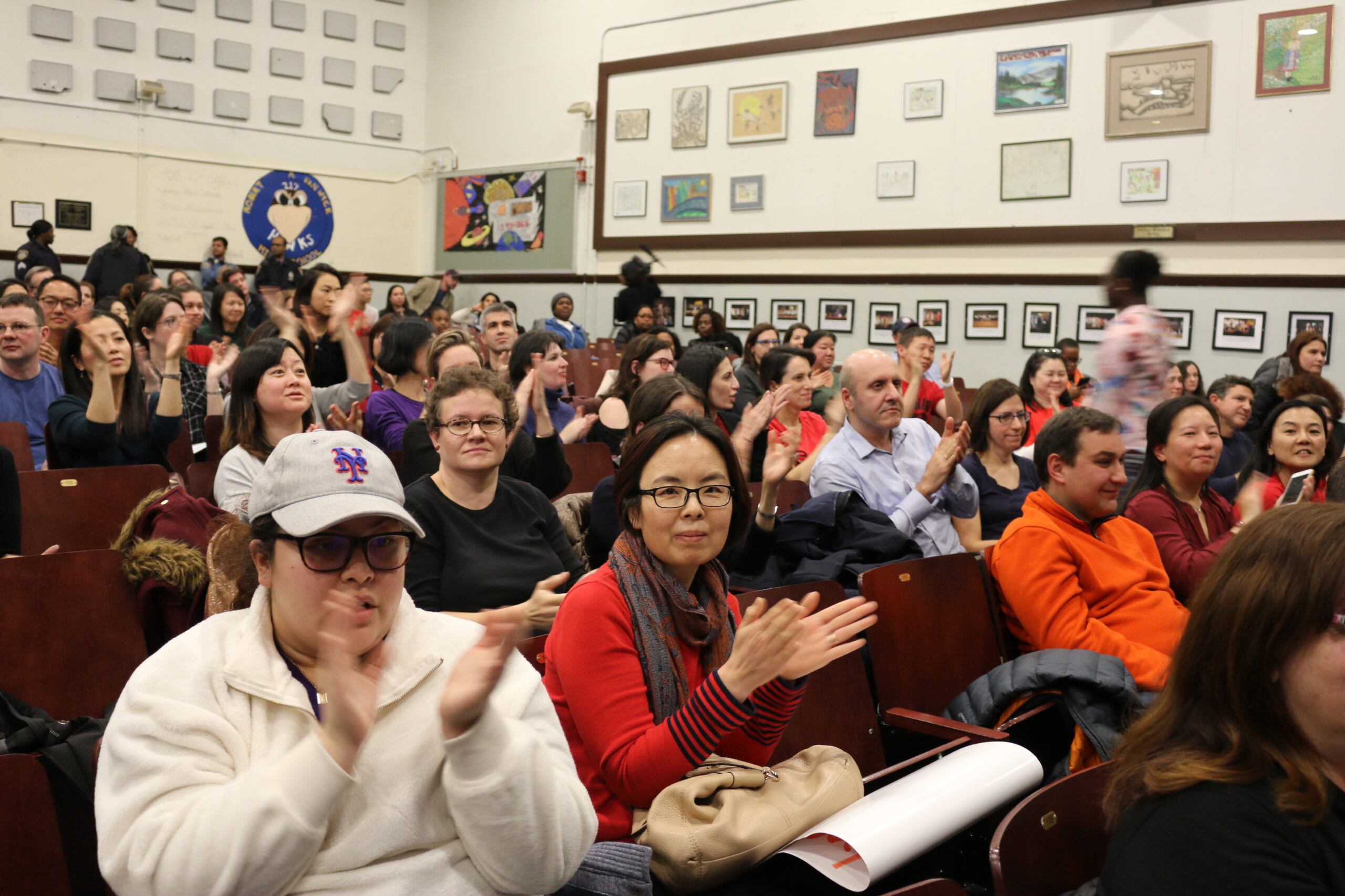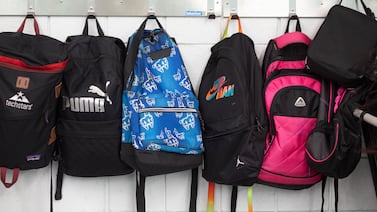New York City’s Community Education Councils have emerged in recent years as an instrumental platform — and a battleground — when it comes to changing admissions policies in attempts to integrate one of the country’s most segregated school systems.
So when the election process changed this year for these parent-led councils, advocates on all sides of the integration fight seized the opportunity to gain power.
As the electorate for the normally under-the-radar elections expanded from only a handful of PTA leaders at each school to all public school parents citywide, the races became mired in some of the same divisive politics that have consumed the country and a new level of rancor and politicking emerged. In the end, the votes of about 22,000 parents — just 2% of eligible families — could have long-lasting consequences for the city’s school diversity plans.
Now some advocates who fought to expand the voting process for the nine-member councils are anxiously awaiting results, due any day now. They fear that momentum for integration will slow, or grind to a halt, as a group of parents hoping to maintain selective admissions policies, which are often blamed for exacerbating segregation, pushed to win seats.
“I’m a little bit worried,” said Shino Tanikawa, a longtime parent advocate who lobbied the state for the voting changes and has also supported efforts to reform the city’s admissions policies. “I think for this round of elections, it’s tipping the scale for more privileged parents who are going to vote for protecting the system and the status quo.”
She is concerned that the pandemic affected turnout, especially in areas hardest hit by COVID-19, where parents had priorities other than reading through the platforms of more than 1,700 candidates — a record according to the education department. Though there were some in-person voting sites, ballots for the 36 councils were cast mostly online, which may have been tricky for those who aren’t tech savvy or have less access to stable internet connections.
Lucas Liu, on the other hand, is hopeful the elections will help make inroads for parents aligned with him.
He’s co-president of the advocacy group Parent Leaders for Accelerated Curriculum and Education, or PLACE, which formed last school year partly in protest to Mayor Bill de Blasio’s push to change admissions to the city’s prestigious specialized high schools, which enroll strikingly few Black and Latino students. PLACE members argue that the way to make competitive school programs more reflective of the city’s diversity is to expand access to accelerated instruction by, for example, opening more gifted and talented classrooms. Those approaches, however, have so far done little to move the needle.
PLACE homed in on the races for the councils as a way to further its agenda. The group issued recommendations for about 100 preferred candidates running for more than 20 different councils — sometimes with explicit suggestions for the order that parents should rank them. Families got one ballot per child that allowed them to vote for up to three candidates.
“I hope we’ll get more members who listen to parents,” said Liu, who is also running for reelection in Manhattan’s District 3, covering the Upper West Side and part of Harlem. “Everyone wants diversity and equity. ... It’s more how we get there that people disagree with.”
Getting integration efforts off the ground
Throughout de Blasio’s tenure, attempts to reform admissions have been met with fierce resistance, especially when it comes to the city’s specialized high schools and gifted classes. Both enroll starkly few Black and Latino students, and are seen as a way to draw white and middle-class families to public schools. But the programs are majority Asian, setting up a complicated and polarizing debate around race, class, and what it means to integrate schools.
Echoing national trends, tensions have also flared over whether the curricula in schools is reflective of the city’s non-white students. Throughout the pandemic, parents have battled over grading policies, COVID-19 testing in schools, and requiring teachers to head back to classrooms. These divides have trickled down to the education councils.
The parent-run CECs launched in 2004, essentially replacing 32 local school boards when the city transitioned from having a Board of Education to mayoral control, putting the mayor in charge of the school system. Though they don’t have the budget and policy power that the boards had, the CECs have been a place where parents have tried to clawback influence in a system where most decisions fall on the mayor to make.
Their presence has been felt in the push to diversify schools, getting integration plans off the ground in the face of little willingness or support from the education department and the mayor.
In Manhattan’s District 1 on the Lower East Side, the CEC led the charge for the first district-wide integration plan during de Blasio’s tenure, securing changes to how elementary students are assigned to schools. In District 3 on the Upper West Side and Harlem, the CEC cobbled together support for changes to middle school admissions. In both districts, parents organized information sessions, solicited feedback in surveys, demanded data from the education department, and eventually convinced the city to change its policies.
Even before the most recent elections, some of the councils had already become deeply divided. In District 2 — spanning TriBeCa, Chinatown, and the Upper East Side — PLACE members and others with opposing views on the CEC spent much of this year mired in dueling resolutions calling for symbolic changes, such as calling on the education department to drop the use of attendance records in competitive middle school admissions.
At the height of the pandemic, the arguments grew so bitter that conservative news channels took notice, decrying “wokeness” and liberalism run amok. One member posted another’s home address on Twitter, and the council voted to demote the former president — a co-founder of PLACE.
Advocates on all sides watching these developments saw the elections as an opportunity.
Along with an expansion in voting this year came a raft of new rules around campaigning. Candidates are prohibited from soliciting or accepting endorsements or running with other candidates on a slate. Parents who pushed for the new voting structure said they hoped the rules would help level the playing field and attract a wider swath of parents to run. In the end, however, the rules often felt confusing and limiting while trying to mount a campaign.
In addition to PLACE’s endorsements, a progressive caucus of the teacher’s union called MORE did the same. The caucus stands in staunch opposition to many of the policies endorsed by PLACE, blasting the city’s reopening plans as unsafe and supporting admissions reform.
MORE’s involvement sparked complaints that education department employees were inappropriately meddling in the local elections. Meanwhile, some criticized PLACE’s efforts, especially as many members of the group were running for CECs. (Liu said the members who compiled the candidate lists were not running, and the group’s website said they did not directly talk to candidates to make their list.)
Candidates say they received sternly worded emails from the education department warning that rule violations could result in “private or public censure, or disqualification.” Some rushed to delete posts, others questioned whether they were even allowed to speak to fellow candidates.
The education department would not say if any formal complaints were filed, or whether violations were issued — leaving some wondering what good the regulations are without enforcement.
National flashpoints filter down
Previously, CEC candidates did little more than attend a forum and answer questions from PTA members about school zoning and budgets. But as voting this year moved online, campaigning did, too. And some national flash points — such as school reopenings during the pandemic and teaching about structural racism — have filtered down to local school politics and injected some ugliness into the process.
One Black mom from District 30 in Queens decided to run for the education council after attending some anti-bias workshops put on by the council. She’s now second guessing her decision to run.
The mom, who requested anonymity because she fears retribution, said she campaigned on support of policies she feels are anti-racist — issues important to her since District 30 spans luxury apartments in Long Island City and the mammoth Queensbridge public housing complex.
But she soon found herself caught up in Facebook groups and Twitter posts that often veered into blatant racism, with parents suggesting that Black students are underrepresented in gifted classrooms because their families don’t value education. Other parents seemed to worry that a rezoning of a handful of local elementary schools under consideration in District 30 could bring more poor students into higher-income neighborhoods.
“I can’t believe people get away with saying stuff like that publicly,” she said.
It’s likely that the CEC races would have gotten polarized even without the change in voting structure this year, given the tensions that have been building in the city throughout de Blasio’s tenure and throughout the country. Whether the councils can hold onto any momentum of influence they’ve managed to build will ride on who gets elected as the next mayor.
De Blasio’s term is up this year, and it’s widely expected that the next mayor will install his or her own chancellor. Candidates have been repeatedly asked about their stances on the specialized high schools, admissions for gifted programs, and whether middle and high schools should be allowed to use competitive admissions screens — all issues that tie back to segregation in the city’s schools.
“If you have a new mayor who comes in and really values the voice of the CECs, it could be influential,” said NeQuan McLean, a longtime parent leader in Brooklyn’s District 16, covering Bedford-Stuyvesant.
Liu, the PLACE co-president, said he “absolutely” thinks the CECs will be a force to be reckoned with.
“We can certainly rally parents. We can certainly speak out. We can certainly make noise,” he said. “Our job is to advocate.”








